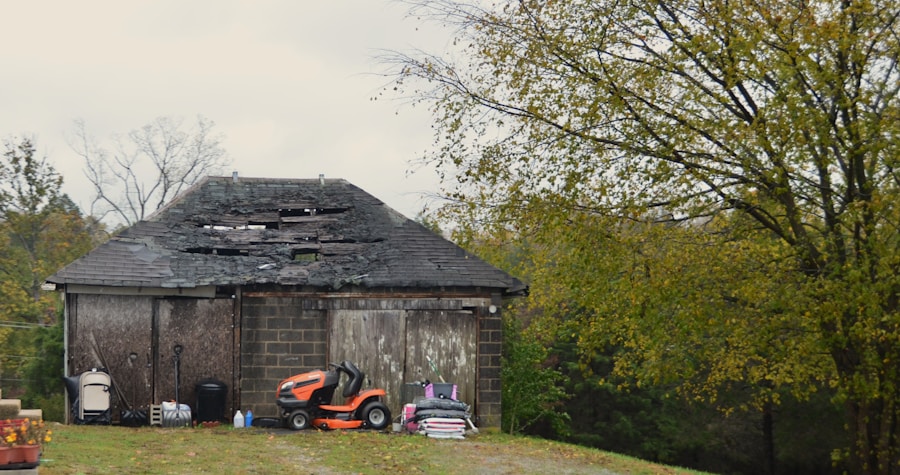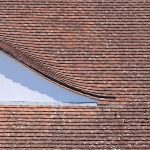
Ice dams are a common problem for homeowners in colder climates, especially during the winter months. Understanding the causes of ice dams is crucial in preventing and addressing the issue. Ice dams form when snow on the roof melts and then refreezes at the edge of the roof, creating a barrier that prevents water from draining properly. This can lead to water backing up under the shingles and causing damage to the roof and interior of the home. Several factors can contribute to the formation of ice dams, including inadequate insulation and ventilation in the attic, fluctuating temperatures, and poor roof design. When warm air from the living space rises into the attic, it can cause the snow on the roof to melt, and if the attic is not properly insulated or ventilated, this melted snow can refreeze at the edge of the roof, leading to the formation of ice dams. Additionally, fluctuating temperatures can also contribute to ice dam formation, as rapid melting and refreezing of snow on the roof can create the conditions for ice dams to develop. Finally, poor roof design, such as low-pitched roofs or complex roof shapes, can also make a home more susceptible to ice dams.
Another factor that can contribute to ice dam formation is the presence of heat sources on the roof, such as skylights or chimneys. These areas can cause localized melting of snow on the roof, which can then refreeze at the edge of the roof and contribute to ice dam formation. Understanding these causes of ice dams is essential in preventing their formation and addressing any existing issues.
Identifying the Signs of Ice Dam Damage
Identifying the signs of ice dam damage is crucial in addressing the issue before it causes significant damage to your home. One of the most common signs of ice dam damage is water stains on the ceiling or walls, which can indicate that water is seeping into the home due to ice dams. Additionally, if you notice icicles forming along the edge of your roof, this can be a sign that ice dams are present and causing water to back up on your roof. Another sign of ice dam damage is sagging or drooping gutters, which can indicate that water is not draining properly from the roof due to ice dams. Finally, if you notice that your roof is leaking during or after a snowstorm, this can also be a sign that ice dams are causing water to back up on your roof and seep into your home.
It’s important to address these signs of ice dam damage as soon as possible to prevent further damage to your home. Ignoring these signs can lead to costly repairs and potential health hazards due to mold growth. By identifying these signs early on, you can take steps to safely remove ice dams from your roof and prevent further damage to your home.
Safely Removing Ice Dams from Your Roof
Safely removing ice dams from your roof is essential in preventing further damage to your home. One method for removing ice dams is using a roof rake to carefully remove snow from the edge of your roof. This can help prevent further melting and refreezing of snow at the edge of your roof, which can contribute to ice dam formation. However, it’s important to use caution when using a roof rake, as it can be dangerous to work on a snowy or icy roof. If you’re not comfortable using a roof rake or if your roof is too high for you to safely reach with a roof rake, it’s best to hire a professional to remove the ice dams from your roof.
Another method for safely removing ice dams from your roof is using calcium chloride ice melt. This can be sprinkled along the edge of your roof to help melt the ice dams and allow water to drain properly from your roof. However, it’s important to use caution when using ice melt, as it can be corrosive and damaging to plants and pets. Additionally, it’s important to use a calcium chloride product specifically designed for use on roofs, as other types of ice melt can be damaging to your roof.
Repairing Water Damage Caused by Ice Dams
Repairing water damage caused by ice dams is essential in preventing further damage to your home. If you notice water stains on your ceiling or walls, it’s important to address these issues as soon as possible to prevent mold growth and further damage to your home. One method for repairing water damage caused by ice dams is using a dehumidifier to remove excess moisture from the air and prevent mold growth. Additionally, it’s important to thoroughly dry any wet areas in your home to prevent further damage.
Another method for repairing water damage caused by ice dams is replacing any damaged insulation or drywall in your home. If water has seeped into your home due to ice dams, it’s important to replace any damaged materials to prevent further damage and mold growth. Additionally, it’s important to address any leaks in your roof or gutters that may have contributed to the formation of ice dams in the first place.
Preventing Future Ice Dams
Preventing future ice dams is essential in protecting your home from further damage. One method for preventing future ice dams is improving insulation and ventilation in your attic. By ensuring that warm air from the living space does not enter the attic and cause snow on the roof to melt, you can prevent the conditions for ice dam formation. Additionally, improving ventilation in your attic can help prevent excess moisture from building up and contributing to ice dam formation.
Another method for preventing future ice dams is ensuring that your gutters are clear of debris and properly draining water away from your home. Clogged gutters can contribute to ice dam formation by preventing water from draining properly from your roof, so it’s important to regularly clean your gutters and ensure that they are functioning properly.
Hiring Professional Help for Ice Dam Repair
Hiring professional help for ice dam repair is essential in safely addressing the issue and preventing further damage to your home. Professional contractors have the experience and equipment necessary to safely remove ice dams from your roof without causing further damage. Additionally, they can assess any existing damage caused by ice dams and recommend repairs to prevent future issues.
When hiring a professional for ice dam repair, it’s important to choose a reputable contractor with experience in addressing ice dam issues. Be sure to ask for references and check online reviews before hiring a contractor for ice dam repair. Additionally, be sure to get a written estimate for the cost of repairs before work begins, and ask about any warranties or guarantees on their work.
Maintaining Your Roof to Minimize Ice Dam Risks
Maintaining your roof is essential in minimizing the risks of ice dam formation. Regularly inspecting your roof for signs of damage or wear can help identify potential issues before they lead to ice dam formation. Additionally, keeping your gutters clear of debris and ensuring that they are draining properly can help prevent water from backing up on your roof and contributing to ice dam formation.
Another method for maintaining your roof to minimize ice dam risks is ensuring that your attic is properly insulated and ventilated. By preventing warm air from entering the attic and causing snow on the roof to melt, you can minimize the risks of ice dam formation. Additionally, ensuring that your attic is properly ventilated can help prevent excess moisture from building up and contributing to ice dam formation.
In conclusion, understanding the causes of ice dams, identifying signs of damage, safely removing ice dams from your roof, repairing water damage caused by ice dams, preventing future ice dams, hiring professional help for repair, and maintaining your roof are all essential in addressing this common issue for homeowners in colder climates. By taking proactive steps to prevent and address ice dam formation, you can protect your home from costly repairs and potential health hazards due to water damage and mold growth.



